There are some similarities between Magpies and Crows. If you compare them side-by-side, there are many things they have in common, including body shape and color. But are magpies in fact crows or are they even related?
Magpies are in fact crows. They are part of the Corvidae family which includes Magpies, Jays, Ravens, Treepies, Nutcrackers, Choughs, Jackdaws, Piapiacs, and Crows. This bird family is referred to in many trusted texts including The Handbook Of Birds Of The World as the crow family.
Continue reading to learn more about the similarities between magpies and crows. We will also look at the other species in the Corvidae family and discover the surprising origin of this very intelligent bird group.

Corvidae Family Traits
Bird species that belong to the Corvidae family are identified by the following traits:
- They have black, white, gray, blue, or green plumage. These colorings are often in bold, large patterns, and have some silky iridescence.
- Their wings are rounded.
- Their tails range from medium in crows and ravens to long in magpies.
- Their bodies are medium to extremely large (the Common Raven being the largest), egg-shaped, and often with a hunched posture.
- Their bills are medium length often with feathers covering the nostrils.
- They have large heads and thick necks.
- Their legs are medium to long.
- They have large feet with long claws.
- The sexes are generally similar.
- They are very intelligent.

Some corvids have been linked to death. Discover more about this in this article.
What’s The Difference Between A Magpie And A Crow?
So if magpies are actually crows, then why call them magpies? What is the difference between a magpie and a crow?
There are obvious genetic differences between the two species but as I don’t have access to a lab or any of the equipment I would need to be able to test this, I’m not going to discuss those here. What we are going to explore are the visual and audible differences between crows and magpies.

Visual Differences
Visually, magpies have long, rounded tails, while those of crows are shorter and more wedge-shaped.

In flight, the differences in their tail shapes are even more pronounced. Below you can also see the white patches on the wings of the black-billed magpie when seen from underneath.
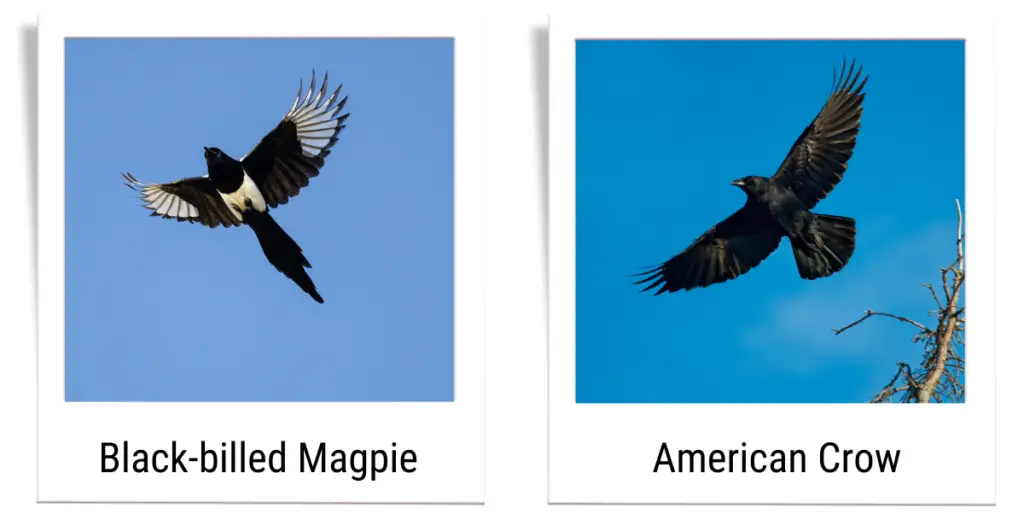
Magpies also tend to have more slender bodies whereas crows are more robust.
Generally, magpies are also more colorful than crows; they are shades of blue, gray, chestnut, and even greens and reds as in the case of the Cissa genus of Asia.

This does not mean that all crows are black, some have brown, white, or gray patches, and their iridescent black plumage can look violet, mauve, or other shades when it catches the light.
Discover why some crows are black in this article here on the site.
Audible Differences
In addition to looking slightly different from each other, magpies and crows also make different sounds.
You would be hard-pressed to find a person on the planet that does not know the sound of a crow. Their distinctive cawing sounds have been used in many Hollywood horror movies and tv shows about witchcraft or superstitions.
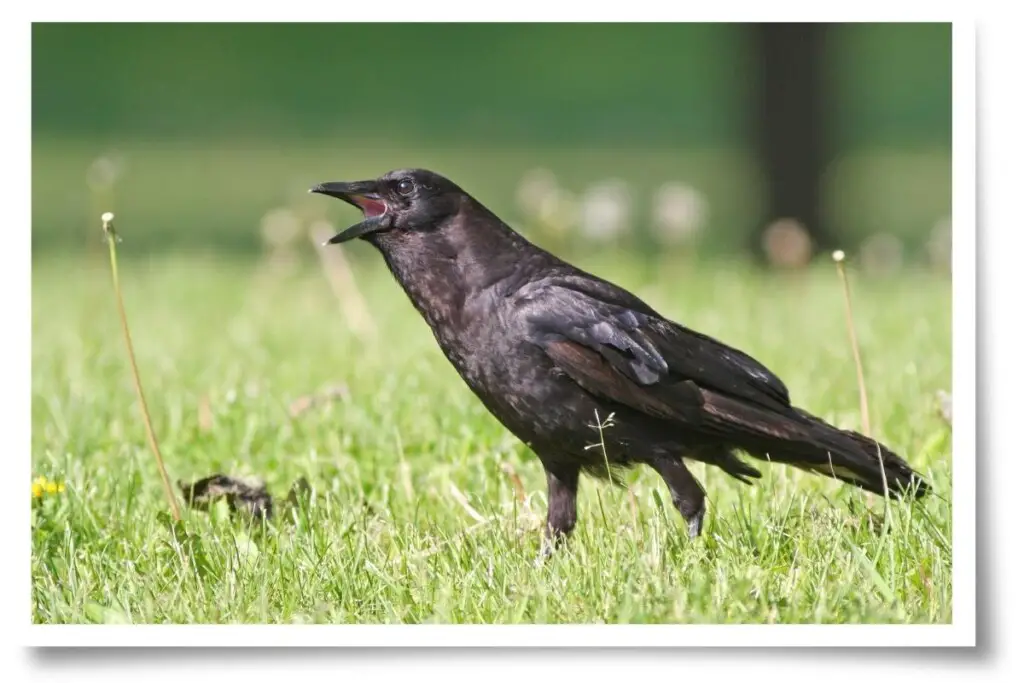
This is not to say that all crows sound like this, they most certainly do not. Many crows have beautiful, melodic songs, such as the Banggai Crow from Sulawesi, Indonesia:

The Cuban crow has taken cawing to another level and even sounds as though it may be uttering entire sentences:

Magpies tend to chatter or screech and generally sound nothing like crows. Below you can hear the calls of the black-billed magpie, one of the two species of magpies found in North America:

The yellow-billed magpie which is found in upper California, west of the Sierra Nevada Mountains sounds very similar to the black-billed magpie:
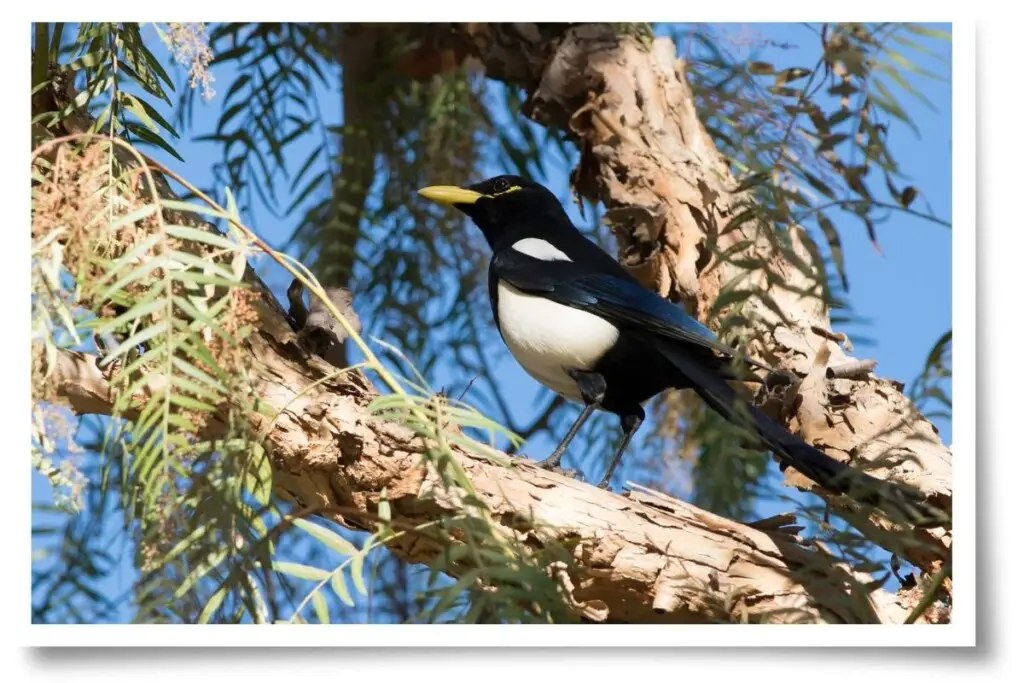
The red-billed blue magpie from Asia has a very beautiful and unique song:

Magpie Vs Crow Comparison
If we look at two common American species from the Corvidae family, the Black-billed Magpie and the American Crow, there are obvious similarities. You can’t look at these birds side-by-side and not think they are related in some way.
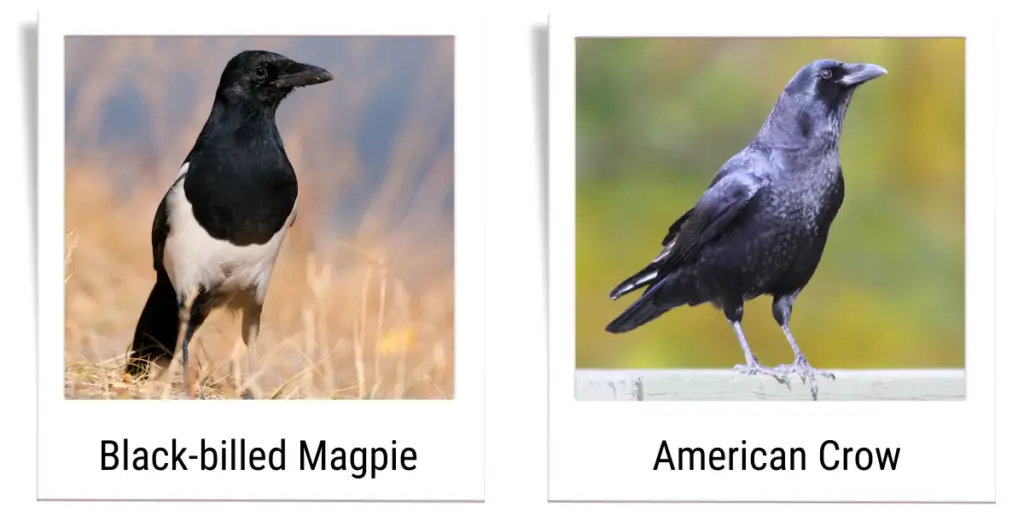
Both species are similar in size; Black-billed magpies are around 45-60 cm (17.7-23.6 in.) in length and American crows are 43-53 cm (16.9-20.9 in.) long.
There are obvious differences in color, with the magpie having a white belly and metallic blue-green wings and tail. The black plumage of the American crow reflects a violet shade in the sunlight.
If we compare their heads side-by-side, there are striking similarities in the shape of their bills. At first glance, it’s hard to see a difference. On both birds, you can see the feathers stretching out over the bill covering the nostrils; this is a common trait of corvids.
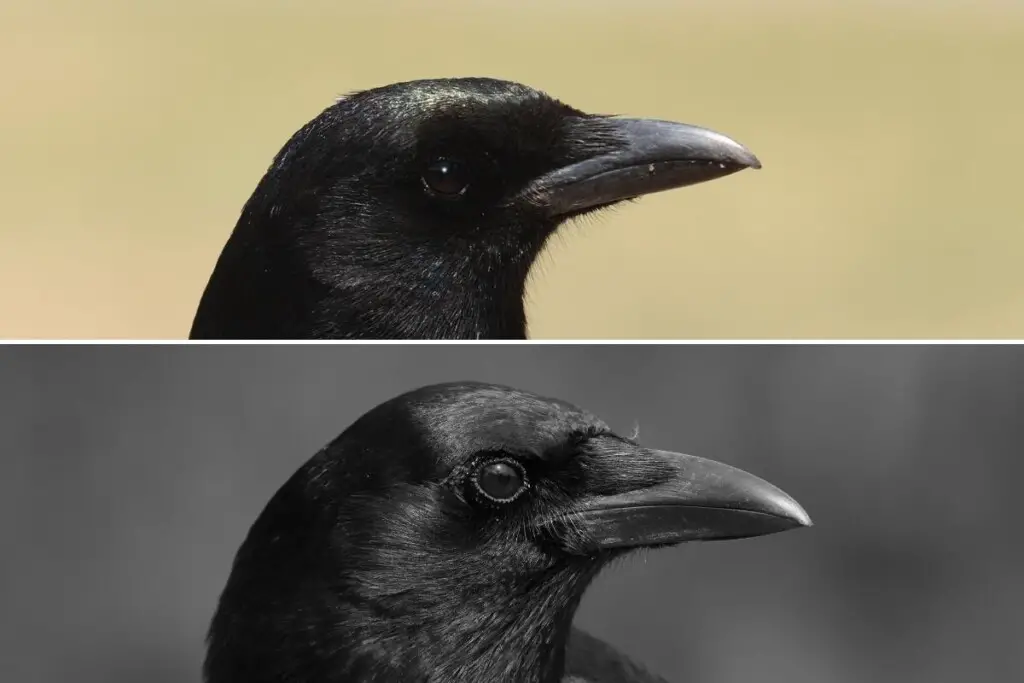
Learn the differences between ravens, crows, and blackbirds in this article.
The Magpie That Is Not A Corvid
Australian Magpies, though they look a lot like a member of the Corvidae family, are not actually corvids at all. This is surprising considering that the Corvidae family originated from a single ancestor in Australia.
These birds were named for their similarity to the European magpie. It was common practice for early settlers to name plants and animals after familiar examples from their homeland.
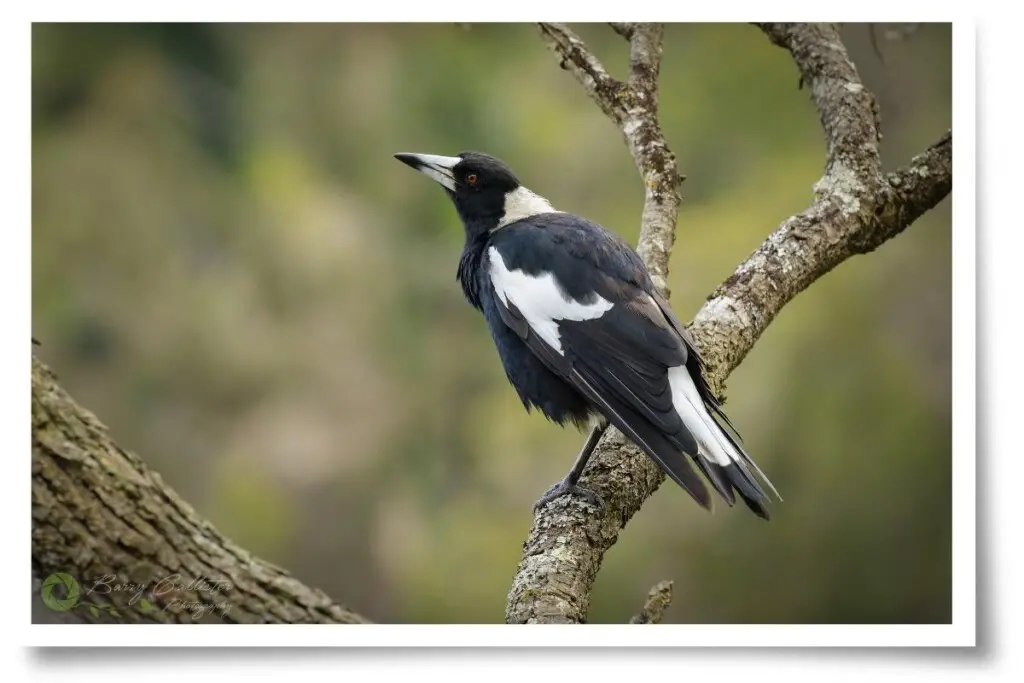
Australian magpies are in the Artamidae family which contains Woodswallows, Peltops, Butcherbirds, and Currawongs. This family of birds is found from Australia to Southeast Asia.
The Australian magpie is around 37-43 cm (14.6-16.9 in.) in length. It has a long, heavy bill that is not as curved as that of birds of the Corvidae family.
The vocal abilities of the Australian magpie are incredible. From their melodic yodeling to mimicry of a number of bird species, other animals, and even sirens and other man-made sounds. Their song is a well-known sound of the bush, urban parks, and backyards Australia-wide.
Listen to this amazing magpie mimic in the video below:
Conclusion
All magpies with the exception of the Australian magpie are members of the crow family. Amazing developments in the field of DNA sequencing have allowed us to trace the lineage of bird species all over the world.
The Corvidae family has been traced all the way back to a single Australian ancestor over 53 million years ago. It is theorized that original members of this bird family migrated from Australia into Asia when the Australo-Papuan tectonic plate split from Antarctica all that time ago. From there they spread into Europe, the Americas, and Africa.
It is mind-blowing to think that every species on this planet, including us, originated from one single organism…I will leave you with that to think about.
References
- Birds Of The World – The Cornell Lab Of Ornithology
- Handbook Of The Birds Of The World Volume 14 – Internet Archive
- Australian magpie – Wikipedia

